
The Most Snake Infested Lakes in Iowa
Approximately 28 snake species occur within Iowa's borders, with five being venomous. These reptiles inhabit various habitats throughout the Hawkeye State, including prairies, woodlands, wetlands, and bodies of water. Lakes, in particular, provide foraging grounds and shelter for several snake varieties. On hot summer days, the cold-blooded creatures often seek refuge near lakesides, docks, and vegetation. While most encounters with humans are harmless, some can turn tragic when bitten by a poisonous.
As such, it is crucial to understand what to do and what not to do if and when you see a snake. This not only prevents an aggressive reaction from the serpents but also allows peaceful coexistence between them and humans. The following are some of the most snake-infested lakes in Iowa.
Lake Red Rock
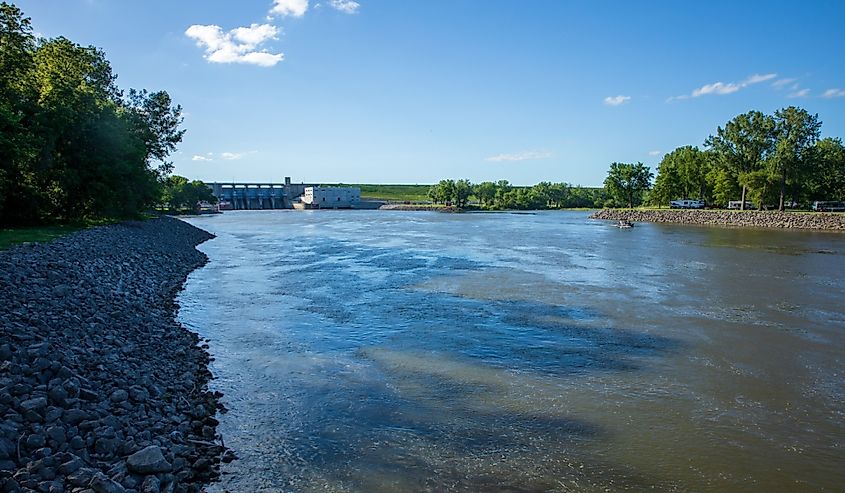
Spanning over 15,000 acres, Lake Red Rock is Iowa's largest reservoir. It was formed after the damming of the Des Moines River in 1969. It is about 45 miles from Des Moines and serves as a regional recreational hub. The lake waters harbor a thriving fish population that draws anglers in droves, including white bass, northern pike, black crappie, and more. The lake is surrounded by 35,000 acres of a premium playground for guests to enjoy camping, hiking, and picnicking.
The lake and its surrounding area serve as habitat for various wildlife species, including amphibians, birds, and small animals, providing ample prey for a healthy snake population. The most common sightings include black rat snakes and brown snakes, often seen on the grassy lake shores hunting for small prey. You might also encounter poisonous species such as the copperhead and prairie rattlesnake.
Saylorville Lake
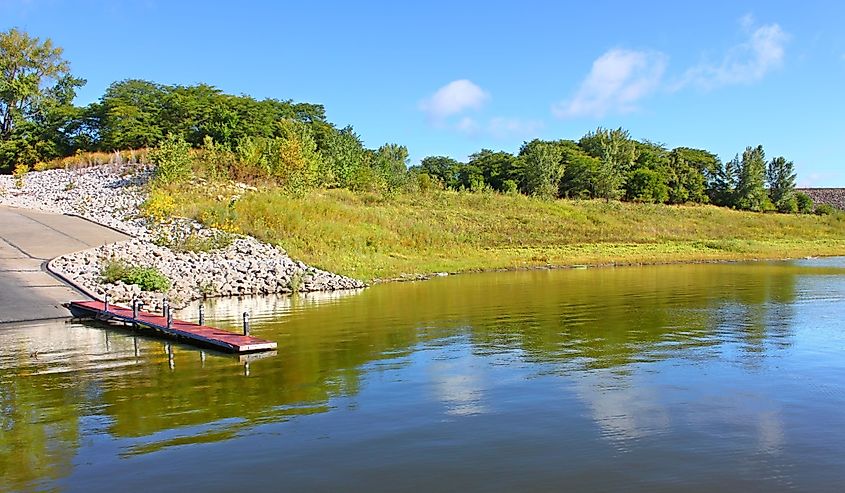
Saylorville Lake is among the largest reservoirs in Iowa, spreading 16,700 acres at full flood level. It resulted from constructing the Saylorville Dam, authorized by the American Congress in 1958, to control floods in the Des Moines River. Besides controlling floods, it has become a bustling recreational oasis with numerous amenities along its shores. Thanks to marinas, boat ramps, campgrounds, picnic shelters, a fishing pier, and an extensive state park infrastructure, visitors from around the region can hike, camp, fish, hunt, and enjoy the scenery.
Saylorville Lake supports a diverse ecosystem, hosting various wildlife including birds, amphibians, fish, and mammals. Visitors should be aware of a healthy presence of both venomous and non-venomous snakes. Sightings of timber rattlesnakes and copperheads are possible along the shores, posing a potential risk to visitors enjoying the area.
West Lake Okoboji
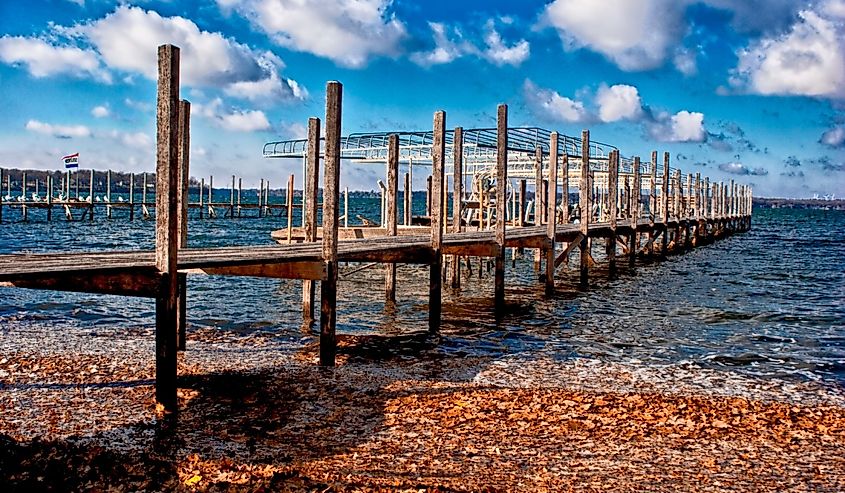
West Lake Okoboji, also known as West Okoboji Lake, is the deepest natural lake in Iowa. It serves as the centerpiece of the Iowa Great Lakes, a chain of five lakes. The towns of Okoboji, Arnolds Park, Wahpeton, and West Okoboji are located along its shores, providing a scenic backdrop for numerous recreational activities on the lake. Visitors from the communities gather here to enjoy various pursuits, including sailing, swimming, water skiing, and motorboating. The area around West Lake Okoboji is also known for its snake population, which leads to frequent human-wildlife encounters and conflicts.
The more commonly occurring species are non-venomous and include northern water snakes and eastern garter snakes. But you should be wary of copperheads when exploring the lake's periphery, given the biting threat they pose to humans. The same applies to the timber rattlesnakes, although they are very scarce.
Coralville Lake
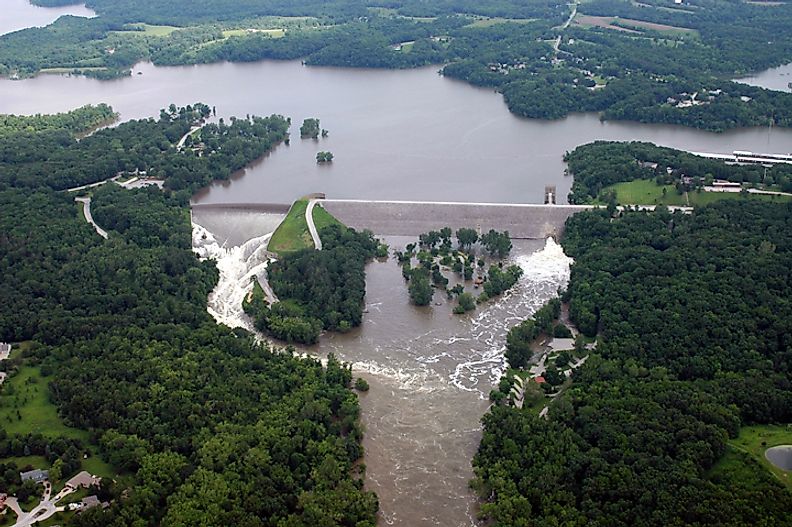
This stunning reservoir in Johnson County was created in 1949 following the construction of the Coralville Dam across the Iowa River. Although it may be one of the largest lakes in the state, its pristine water attracts many visitors. It serves as a popular recreational destination, drawing thousands of Iowans and Midwestern tourists eager to engage in activities like swimming, fishing, and boating. Along its scenic shores, several nature trails wind through lush vegetation and parks, offering opportunities for bird-watching, hiking, and camping.
Coralville Lake is known for its abundant wildlife, including birds, reptiles, mammals, and fish. Visitors often report encountering snakes when swimming or relaxing on the lake's shores. Smooth green snakes are among the most common, often blending into the grassy areas along the shore. Meanwhile, the water moccasin is a venomous snake to watch out for, although sightings are relatively rare.
Lake Wapello
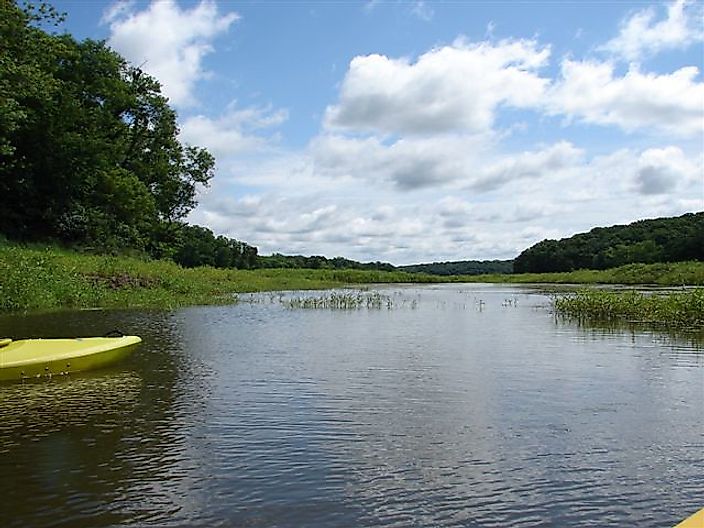
Lake Wapello is an artificial lake in Davis County, situated about 7 miles from Drakesville. The beautiful lake is entirely within Lake Wapello State Park, which is a renowned recreation haven among the surrounding communities. The curious name of the lake was inspired by Chief Wapello of the native Meskwaki people. With over 1,000 acres of lush woodlands and undulating landscapes encircling the lake, the soothing scenery is the perfect setting for kayaking, fishing, canoeing, and boating activities.
Some guests visit the lake and the park just to watch the bustling wildlife in the area. While birds and small mammals are always a welcome sight, running into a snake can be a hair-raising experience for many. Luckily, most species found here, including the common garter snake and milk snake, pose little to no harm to humans except when you encounter a venomous timber rattlesnake.
Big Creek Lake
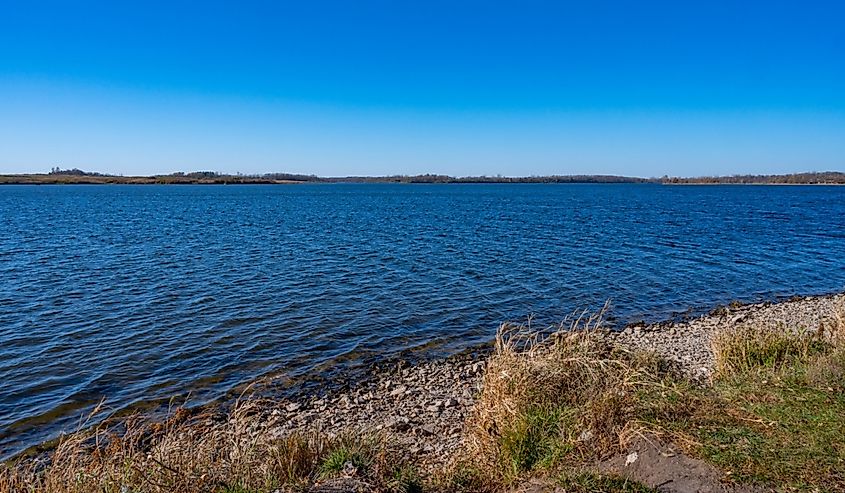
Big Creek Lake is part of Big Creek State Park and is located about 2 miles from Polk City. Originally constructed to prevent flooding, it has become a favorite destination for fishermen and families looking for water activities. Despite covering just 814 acres, its abundant snake population makes it one of Iowa's most snake-infested lakes. Its wide range of recreational activities, including swimming, boating, camping, and fishing, also raise the chances of visitors encountering snakes.
The snakes have various habitats where they can thrive, including water, grassy shores, and the dense woodlands of the park. Fortunately, sightings of venomous species in the area are rare, if not nonexistent. Most encounters reported by visitors involve calm and harmless types like the plain garter and brown snakes, which often slide away without any trouble.
Lake Manawa
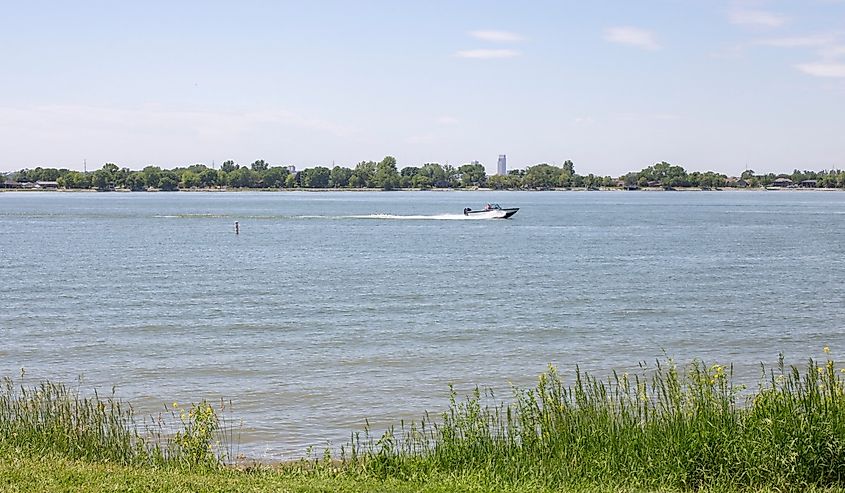
Lake Manawa, situated on the outskirts of Council Bluffs, is a top spot for hiking, boating, and camping. Surrounded by over 1,500 acres of wilderness with a relaxed vibe, it offers countless opportunities for outdoor enthusiasts. "Manawa" is a Native American word meaning peace and comfort, which perfectly reflects the lake's peaceful setting. It's a popular destination for families from the community to enjoy its many amenities, including the state's largest ADA-accessible playground.
The lake and its surrounding area serve as a feeding and foraging habitat for various native Iowa snake species. These include the northern watersnake, often seen on the shores, and the prairie kingsnake. Additionally, you might encounter the poisonous cottonmouth, which should be approached with caution and given plenty of space.
Final Thoughts
While some of Iowa's lakes are notable for their diverse snake communities in the United States, most regular residents are non-venomous varieties that play an essential role in maintaining ecological balance. By understanding which species favor which habitats and practicing common sense precautions like watchful movement near rocky ledges or lush vegetation, lake enthusiasts can continue to responsibly appreciate what the most snake-infested lakes in Iowa offer. With minor adjustments and an awareness of the potential, albeit small, risk that venomous snakes may also inhibit peripheral areas, Iowans and visitors alike can make the most of water-based recreation at these scenic lakes throughout the season.











